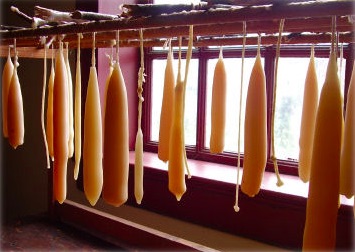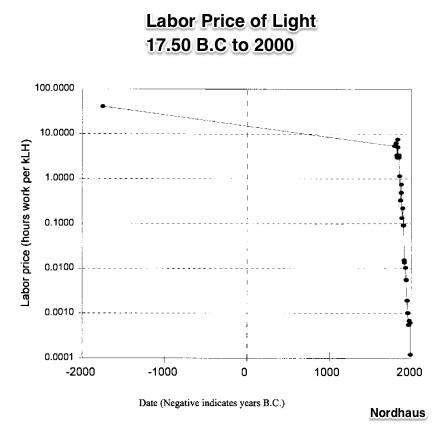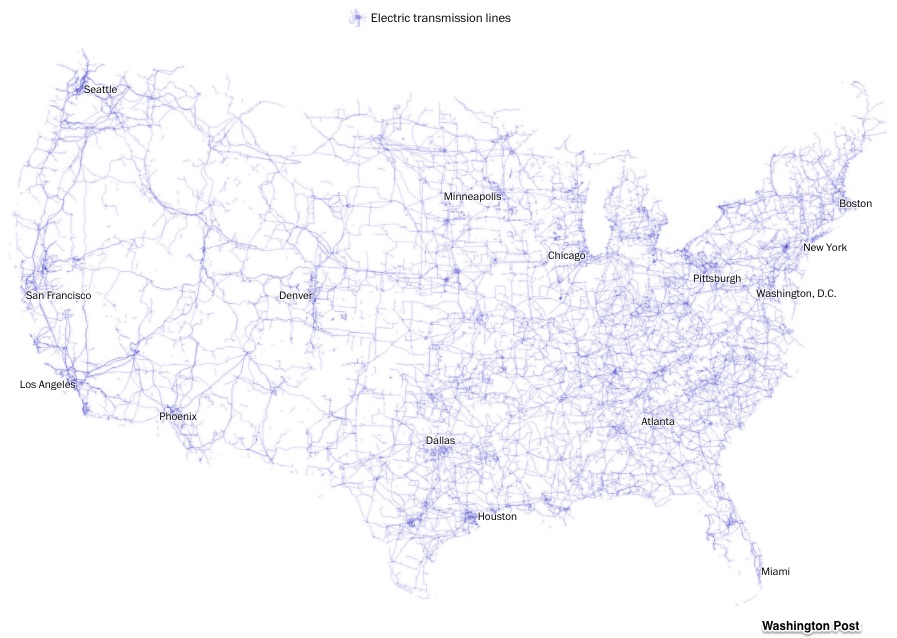In 1770s Virginia, this poor gentleman had no light:
Even during the day, light was a worry in colonial Virginia. The size and position of the windows in your home mattered as much as the color of your paint. All were selected to get the most illumination. Yes, candles were available. But sunlight was free.
Where are we going? To a look at lighting.
Lighting History
When (soon-to-be Nobel Laureate) William Nordhaus traced the history of lighting during the past two centuries, he concluded that we vastly understated its impact on our standard of living.
The president of Harvard noted in a 1743 diary entry that it took his household two days to make 78 pounds of tallow candles. Six months later he wrote, “Candles all gone.” Similarly, George Washington calculated that it cost him £8 a year (more than $1,000 today) to burn a spermaceti candle for five hours a night.
Like candles, nineteenth century sperm oil, gas, and kerosene lamps were expensive. In 1800, a typical middle class urban household spent approximately 4% of its income on the oil, lamps, matches and candles that illuminated their lives.
Today we spend much less for so much more. During the 1990s, Dr. Nordhaus told us that a typical middle class urban household spends less than 1% of its income on artificial light. Looking back, you can see how the price of light changed since George Washington made his candles:
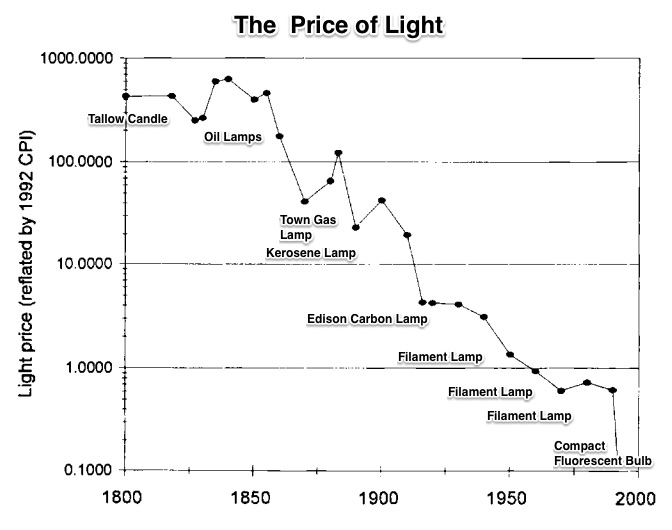 And that descent meant fewer labor hours bought more and more illumination:
And that descent meant fewer labor hours bought more and more illumination:
Artificial light was once too costly to use. And now, it is so cheap that we barely notice it. One reason is our illumination infrastructure.
Our Bottom Line: An Illumination Infrastructure
From a candle to a grid, the illumination that spread across our country became a nationwide network. Similar to our financial and transportation infrastructures, its impact transformed what we could do at home, at work, and at school.
The Washington Post mapped the infrastructure that provides the power for our lighting: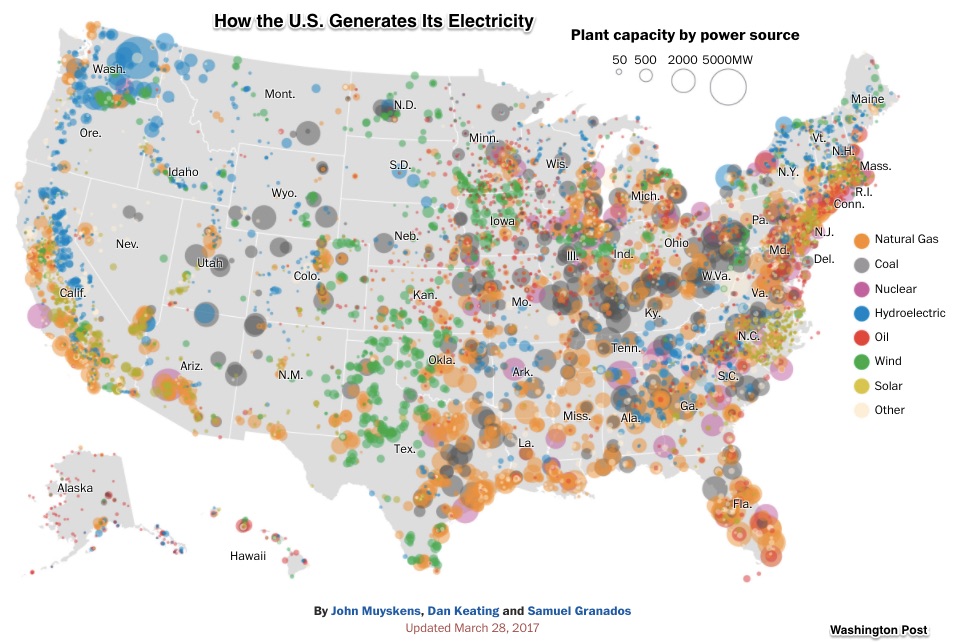
And these are the 160,000 miles of high-voltage electric transmission lines:
Amazing to think that it all started with a tallow candle.
Sources and resources: For a good read about colonial lighting, I recommend this article (the source of my snake quote). However, the Nordhaus paper had a fascinating overview of the history of lighting with a summary here while the Washington Post had the infrastructure maps. But if you just want the light side (sorry), this Tim Harford podcast is wonderful.
Because of William Nordhaus’s Nobel Prize, we’ve quoted sections of a previously published econlife.

